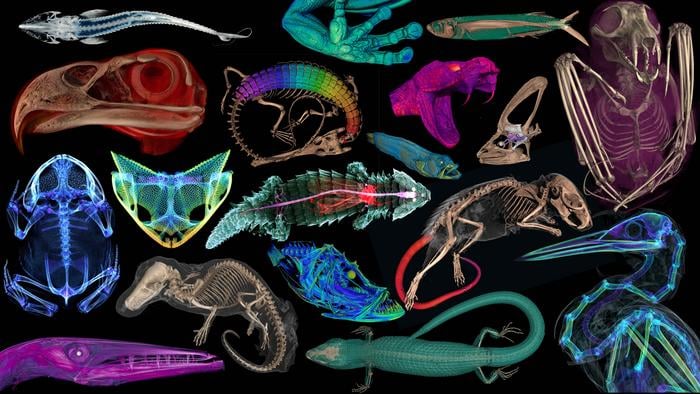The completion of the openVertebrate (oVert) project has ushered in a new era of scientific discovery and accessibility for natural history museums. This five-year collaborative effort among 18 institutions has created 3D reconstructions of over 13,000 vertebrate specimens, making them freely available online.
“When people first collected these specimens, they had no idea what the future would hold for them,” said Edward Stanley, co-principal investigator of the oVert project and associate scientist at the Florida Museum of Natural History.
The oVert project represents a significant shift from the traditional model where museum collections were largely inaccessible to the public and required researchers to physically travel or request specimen loans. “Now we have scientists, teachers, students and artists around the world using these data remotely,” explained David Blackburn, lead principal investigator and curator of herpetology at the Florida Museum.
Through CT scanning, the project has captured representative species across the vertebrate tree of life, including over half the genera of all amphibians, reptiles, fishes, and mammals. These detailed 3D models offer an unprecedented view of internal structures that were previously only observable through destructive dissection.
“Museums are constantly engaged in a balancing act,” Blackburn said. “You want to protect specimens, but you also want to have people use them. oVert is a way of reducing the wear and tear on samples while also increasing access, and it’s the next logical step in the mission of museum collections.”
The impact of oVert has already been profound, with researchers using the data to uncover remarkable insights into the natural world, such as the discovery of bony plates in the tails of spiny mice and the revelation that the massive dinosaur Spinosaurus was likely a land-dweller rather than an aquatic predator.
Beyond scientific research, the 3D models have been utilized by artists, educators, and in virtual reality experiences, making natural history more accessible and engaging than ever before.
As the project moves forward, the challenge lies in developing advanced tools and techniques to fully leverage this unprecedented wealth of data, pushing the boundaries of what is possible in fields ranging from machine learning to supercomputing.
#DigitalMuseum #3DModelingTechnology #NaturalHistoryCollections #OpenScience
If our reporting has informed or inspired you, please consider making a donation. Every contribution, no matter the size, empowers us to continue delivering accurate, engaging, and trustworthy science and medical news. Independent journalism requires time, effort, and resources—your support ensures we can keep uncovering the stories that matter most to you.
Join us in making knowledge accessible and impactful. Thank you for standing with us!

